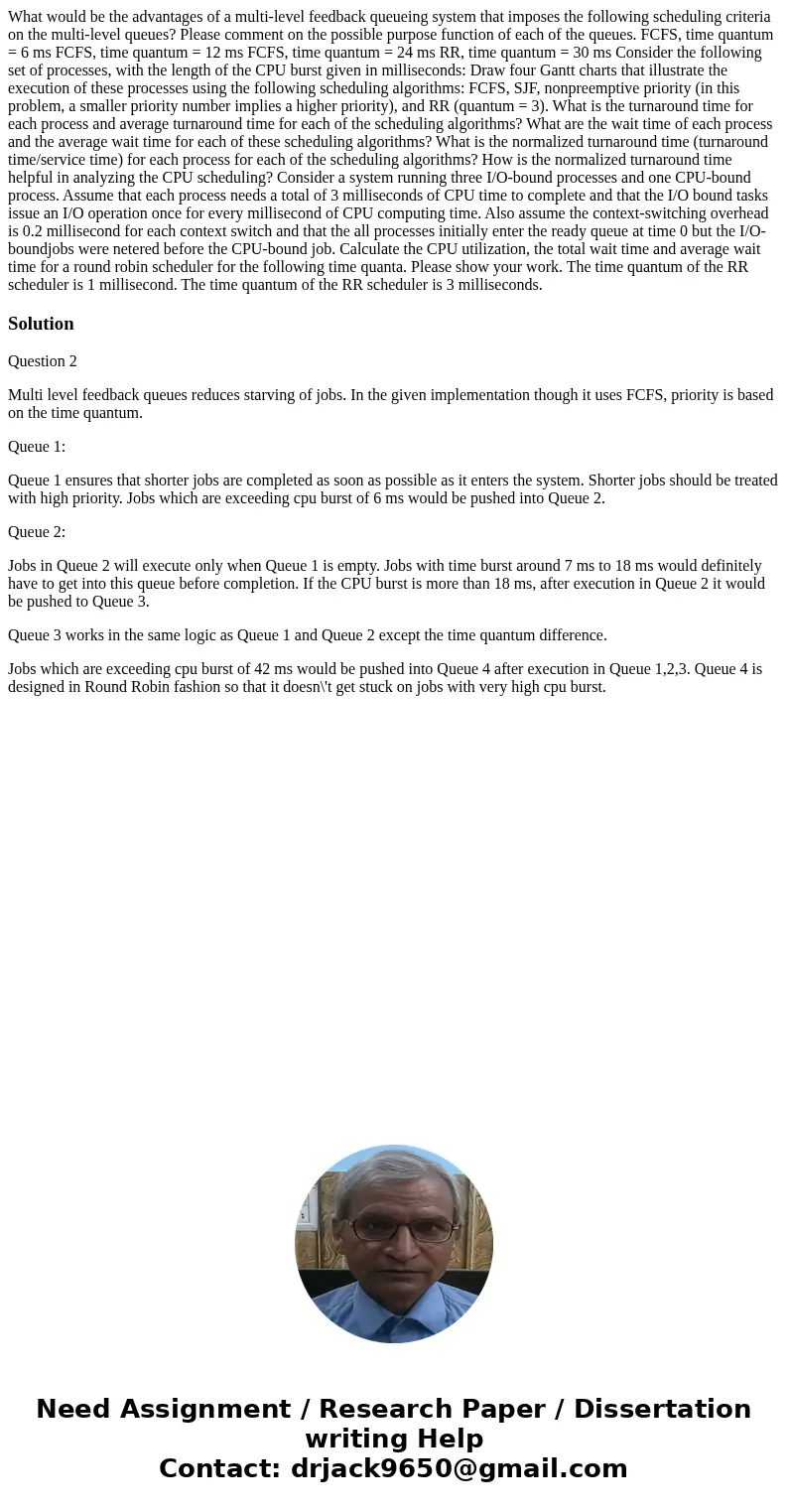What would be the advantages of a multi-level feedback queueing system that imposes the following scheduling criteria on the multi-level queues? Please comment on the possible purpose function of each of the queues. FCFS, time quantum = 6 ms FCFS, time quantum = 12 ms FCFS, time quantum = 24 ms RR, time quantum = 30 ms Consider the following set of processes, with the length of the CPU burst given in milliseconds: Draw four Gantt charts that illustrate the execution of these processes using the following scheduling algorithms: FCFS, SJF, nonpreemptive priority (in this problem, a smaller priority number implies a higher priority), and RR (quantum = 3). What is the turnaround time for each process and average turnaround time for each of the scheduling algorithms? What are the wait time of each process and the average wait time for each of these scheduling algorithms? What is the normalized turnaround time (turnaround time/service time) for each process for each of the scheduling algorithms? How is the normalized turnaround time helpful in analyzing the CPU scheduling? Consider a system running three I/O-bound processes and one CPU-bound process. Assume that each process needs a total of 3 milliseconds of CPU time to complete and that the I/O bound tasks issue an I/O operation once for every millisecond of CPU computing time. Also assume the context-switching overhead is 0.2 millisecond for each context switch and that the all processes initially enter the ready queue at time 0 but the I/O-boundjobs were netered before the CPU-bound job. Calculate the CPU utilization, the total wait time and average wait time for a round robin scheduler for the following time quanta. Please show your work. The time quantum of the RR scheduler is 1 millisecond. The time quantum of the RR scheduler is 3 milliseconds.
Question 2
Multi level feedback queues reduces starving of jobs. In the given implementation though it uses FCFS, priority is based on the time quantum.
Queue 1:
Queue 1 ensures that shorter jobs are completed as soon as possible as it enters the system. Shorter jobs should be treated with high priority. Jobs which are exceeding cpu burst of 6 ms would be pushed into Queue 2.
Queue 2:
Jobs in Queue 2 will execute only when Queue 1 is empty. Jobs with time burst around 7 ms to 18 ms would definitely have to get into this queue before completion. If the CPU burst is more than 18 ms, after execution in Queue 2 it would be pushed to Queue 3.
Queue 3 works in the same logic as Queue 1 and Queue 2 except the time quantum difference.
Jobs which are exceeding cpu burst of 42 ms would be pushed into Queue 4 after execution in Queue 1,2,3. Queue 4 is designed in Round Robin fashion so that it doesn\'t get stuck on jobs with very high cpu burst.

 Homework Sourse
Homework Sourse